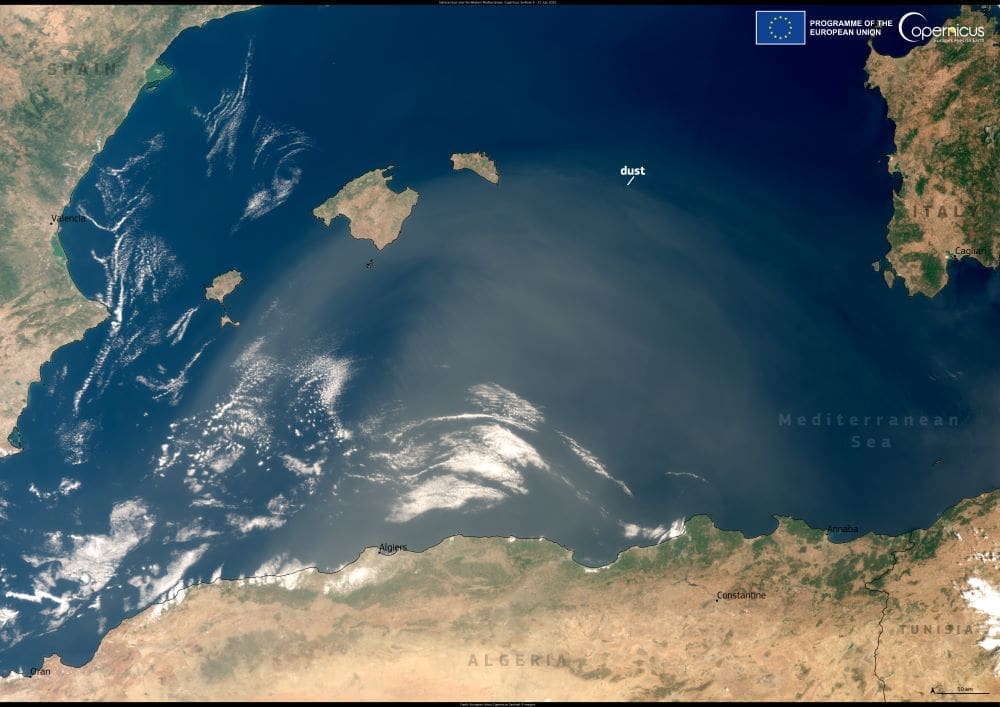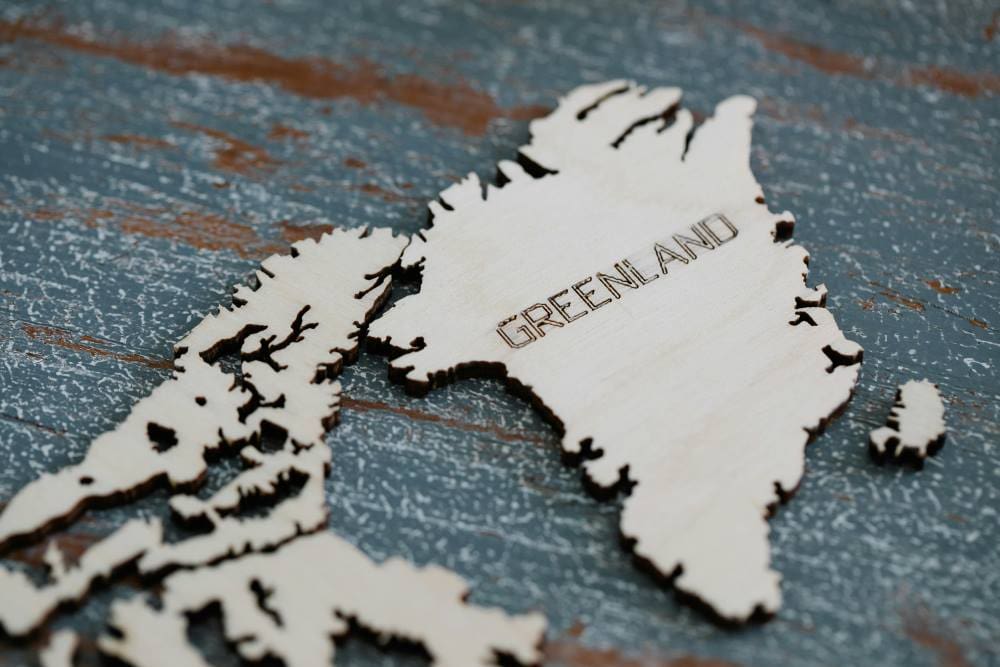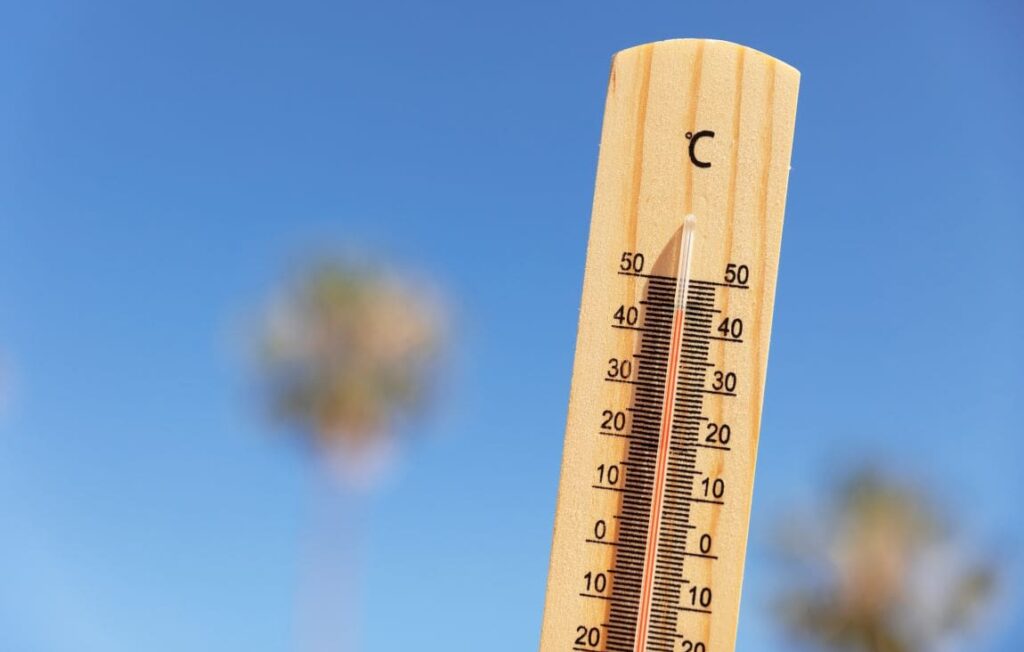A dense plume of Saharan dust is seen spreading northward over the western Mediterranean in this Sentinel-3 satellite image, captured on 15 July 2025. The dust stretches from northern Algeria across the Mediterranean Sea toward the Balearic Islands, casting a pale haze over the region and muting the contrast between sea and sky.
Carried by strong desert winds, the fine particles form a vast airborne veil that reaches the islands, with its distinctive tan color sharply dividing the arid southern zone from the clearer skies farther north. Such dust outbreaks are common in summer and can significantly affect air quality, visibility, and even marine ecosystems by delivering nutrients like iron to the ocean surface.

The Copernicus Atmosphere Monitoring Service (CAMS) provides ongoing observations and forecasts of these transboundary aerosol events, helping authorities anticipate their impact. The Copernicus Health Hub also plays a role in tracking these plumes, offering access to health-relevant environmental data that supports early warnings and public safety planning.
This image from the Copernicus Sentinel-3 mission illustrates the wide reach of Saharan dust as it crosses continents and seas, influencing weather, climate, and air quality across Europe.
Featured image credit: European Union, Copernicus Sentinel-3 imagery



